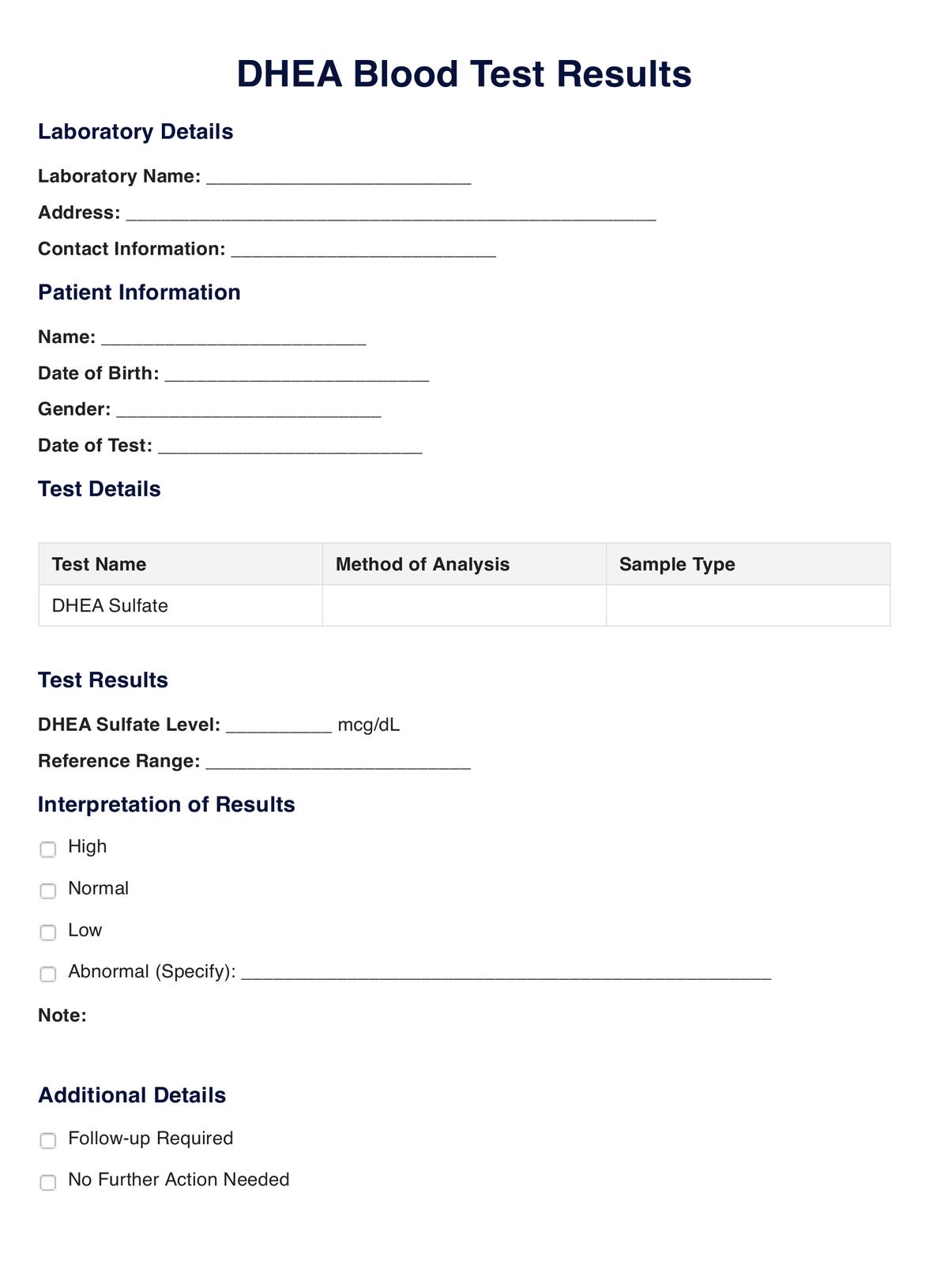The DHEA sulfate (DHEAS) test measures dehydroepiandrosterone sulfate levels, a steroid hormone the adrenal glands produce. This test is crucial for assessing whether the adrenal glands are working correctly and to check for any adrenal gland disorders.

DHEAS blood test
The DHEAS blood test evaluates adrenal gland function by measuring dehydroepiandrosterone sulfate levels, aiding in diagnosing hormonal disorders and adrenal health.
DHEAS blood test Template
Commonly asked questions
DHEAS plays a role in the production of male and female sex hormones, including testosterone and estrogen. In men, it influences sexual features and testosterone effects. In women, it affects menstrual cycle regularity and estrogen levels. Imbalances can lead to symptoms like excess hair growth or irregular periods.
Yes, elevated DHEA S levels can be indicative of PCOS, characterized by androgen excess and menstrual irregularities. It's also used in diagnosing congenital adrenal hyperplasia, a condition affecting adrenal gland function.
EHR and practice management software
Get started for free
*No credit card required
Free
$0/usd
Unlimited clients
Telehealth
1GB of storage
Client portal text
Automated billing and online payments











